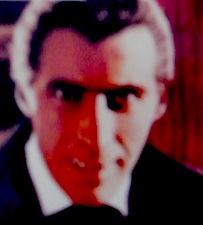There is a musical group that has moved beyond the idea and stereotype of being a power metal band, or even a symphonic metal band, and have created for themselves an entirely new genre. While still using thematic melodies infused with harsh guitar riffs, and a blending of the operatic and the guttural, these individuals have emerged as a unique sound that stimulates mentally and visually, as well as audibly.
This group is Nightwish.
Formed in 1996 this Finnish group has undergone several changes in the lineup, the most notable being the departure of vocalist Tarja Turunen. Up until this point I had known and enjoyed the music they produced. It was a strong sound, both masculine and feminine, and several of their singles were quite powerful: Sleeping Sun, Gethsemane, I Wish I Had An Angel, and Nemo to name a few. Their cover of Walking in the Air is beautiful. At this point they were very good but, for me personally, not great. To be fair, at the time they were competing with an onslaught of such groups (Evanescence, Within Temptation, Lacuna Coil, Streams of Passion, Lunatica) that, although not exactly the same, had similar sounds or approaches to the craft.
However, it was after Tarja's departure, and the album that followed, that truly resonated with me.
Dark Passion Play is a beautiful symphony. The planning and intent that went into it are phenomenal. This album focused the band in a way that hadn't been achieved before, entwining the art of orchestra, vocals, and metal to create a glorious work of art.
There have been critics that claim that the new female vocalist, Anette Olzon, was not comparable to the original. In a way they are right. She is better. Anette's voice may not be as strong thematically (Tarja's was pure opera) but that is her strength. Her voice changes to suite the mood and tone of each song, so that nothing is lacking. This makes each song accessible to different audiences.
The album was released originally as two discs, with one having the "regular" tracks; ie, music and lyrics. The second disc was music only, which emphasized the genius of the musicians.
It is one thing to create a strong album, with powerful lyrics and melodies. It is another to have that same album be just as strong without the words.
Their latest album Imaginaerum has proven that this was not a one-off. There is less of the heavy male vocals, even in the harder rock pieces. Instead the album comes off as more creative, more soothing, more enticing and poignant. Love went into these tracks and it has touched every part of this masterpiece. The format is the same as Dark Passion Play, where the songs are bound together to tell a story to the listener, and yet it does not feel the same. The tone of the two albums are comepletley different and that energy can be felt throughout. The lyrics for this album seem to be both more thoughtful and more playful than the previous one.
Although I have favoured songs from each album, the ones that move me to joy and to tears, both Dark Passion Play and Imaginaerum are masterpieces of their own and both own my heart.
There is a bonus coming, a film based on the music of Nightwish, also titled Imaginaerum. The release date, at least the last that I am aware of, is for August 2012. I hope, though my heart is heavy, that it will be a wide release and come to North America theatres.
Link to the official Nightwish channel:
Link to official website:
Dark Passion Play found here: http://upload.wikimedia.org/wikipedia/en/5/5e/Dark_Passion_Play.jpg
Imaginaerum (album) found here: http://upload.wikimedia.org/wikipedia/en/1/18/Nightwish_imaginaerum_cover.jpg
Imaginaerum (film) poster found here: http://en.wikipedia.org/wiki/File:Imaginaerum_teaser.jpg























.jpg)